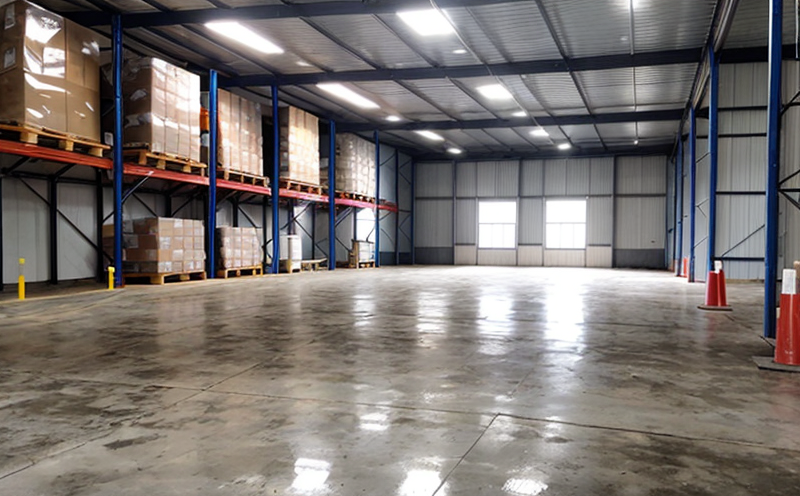Warehouse floor inspection
The integrity and condition of warehouse floors are critical to ensuring safe operations and compliance with safety standards. Warehouse floor inspections involve a detailed examination of the flooring materials, structural integrity, drainage systems, and other relevant factors that can impact safety, efficiency, and long-term durability.
Warehouse floors are subjected to heavy loads, constant traffic, and sometimes harsh weather conditions. Regular inspections help identify potential issues before they escalate into more serious problems, ensuring a safe working environment for employees and minimizing the risk of accidents or damage.
The primary goal of a warehouse floor inspection is to ensure that all aspects of the flooring system meet safety standards and operational requirements. This includes assessing the following:
- Surface conditions
- Slip resistance
- Erosion and wear patterns
- Deterioration or damage due to moisture, chemicals, or heavy lifting equipment
- Alignment of flooring with structural elements
- Drainage systems and water management practices
The inspection process typically involves a visual assessment combined with the use of specialized instruments. These tools help in detecting hidden issues that may not be apparent to the naked eye. For instance, ground-penetrating radar (GPR) can reveal subsurface defects such as voids or delaminations.
| Aspect | Inspection Method | Purpose |
|---|---|---|
| Surface conditions | Visual inspection and tactile assessment | To identify cracks, wear patterns, or signs of deterioration |
| Slip resistance | Sand cone test (ASTM D5780) | To measure the friction coefficient and ensure compliance with safety standards |
| Deterioration due to moisture/chemicals | Infrared imaging | To detect moisture or chemical damage beneath the surface |
| Drainage systems | Flow testing and visual inspection | To ensure proper water drainage and prevent pooling |
| Alignment with structural elements | Leveling and alignment tools | To check for any misalignment that could affect load distribution or stability |
In addition to the above, it's essential to consider the type of flooring material being used. Common materials include concrete, epoxy coatings, and rubberized compounds. Each has its own set of maintenance requirements and potential issues.
- Concrete floors are durable but prone to cracking over time.
- Epoxy coatings provide a smooth surface with excellent chemical resistance but require regular re-coating.
- Rubberized compounds offer high slip resistance and durability, especially in environments where heavy lifting equipment is used.
Inspections should be conducted regularly to maintain the integrity of the warehouse floor. The frequency depends on factors such as traffic volume, environmental conditions, and the type of materials used. In some cases, inspections may need to occur more frequently due to specific operational demands or historical data that indicates higher risk.
Eurolab Advantages
At Eurolab, we provide comprehensive warehouse floor inspection services tailored to meet the unique needs of each client. Our team of experts combines years of experience with advanced technology to ensure accurate and reliable results.
- Expertise: Our inspectors have extensive knowledge in warehouse operations and safety standards.
- Technology: We utilize cutting-edge tools such as GPR, infrared imaging, and leveling devices for precise measurements and assessments.
- Compliance: All our inspections are conducted in accordance with international standards like ASTM D5780 and ISO 13432.
- Reporting: Our detailed reports provide actionable insights to help you make informed decisions about maintenance and improvements.
We offer flexible scheduling options to accommodate your busy warehouse operations. Our goal is to minimize downtime while providing thorough inspections that meet or exceed industry expectations.
Competitive Advantage and Market Impact
- Predictive Maintenance: By identifying potential issues early, we help clients implement predictive maintenance strategies that reduce the risk of costly repairs.
- Enhanced Safety: Ensuring compliance with safety standards not only protects employees but also helps avoid regulatory penalties and lawsuits.
- Improved Efficiency: A well-maintained warehouse floor can significantly improve the efficiency of operations by reducing the likelihood of accidents and equipment damage.
In today's competitive market, maintaining a safe and efficient warehouse is crucial. By partnering with Eurolab for your warehouse floor inspection needs, you gain access to expert knowledge and advanced technology that sets you apart from competitors.
Use Cases and Application Examples
The following scenarios illustrate how our warehouse floor inspection services can be applied in various situations:
- New Construction: Ensuring that newly installed floors meet all safety standards before operations commence.
- Routine Maintenance: Regular inspections to catch minor issues before they become major problems.
- After Incident: Post-incident assessments to identify the cause of an accident and recommend necessary repairs or improvements.
| Scenario | Action Taken | Outcome |
|---|---|---|
| New Construction | Inspection and certification of floor materials and installation quality | Safety compliance and readiness for operations |
| Routine Maintenance | Visual inspection, surface testing, and re-coating or repair as needed | Prolonged life of the flooring system and enhanced safety |
| After Incident | In-depth examination to identify root causes and propose corrective measures | Avoidance of similar incidents in future and improved operational standards |





